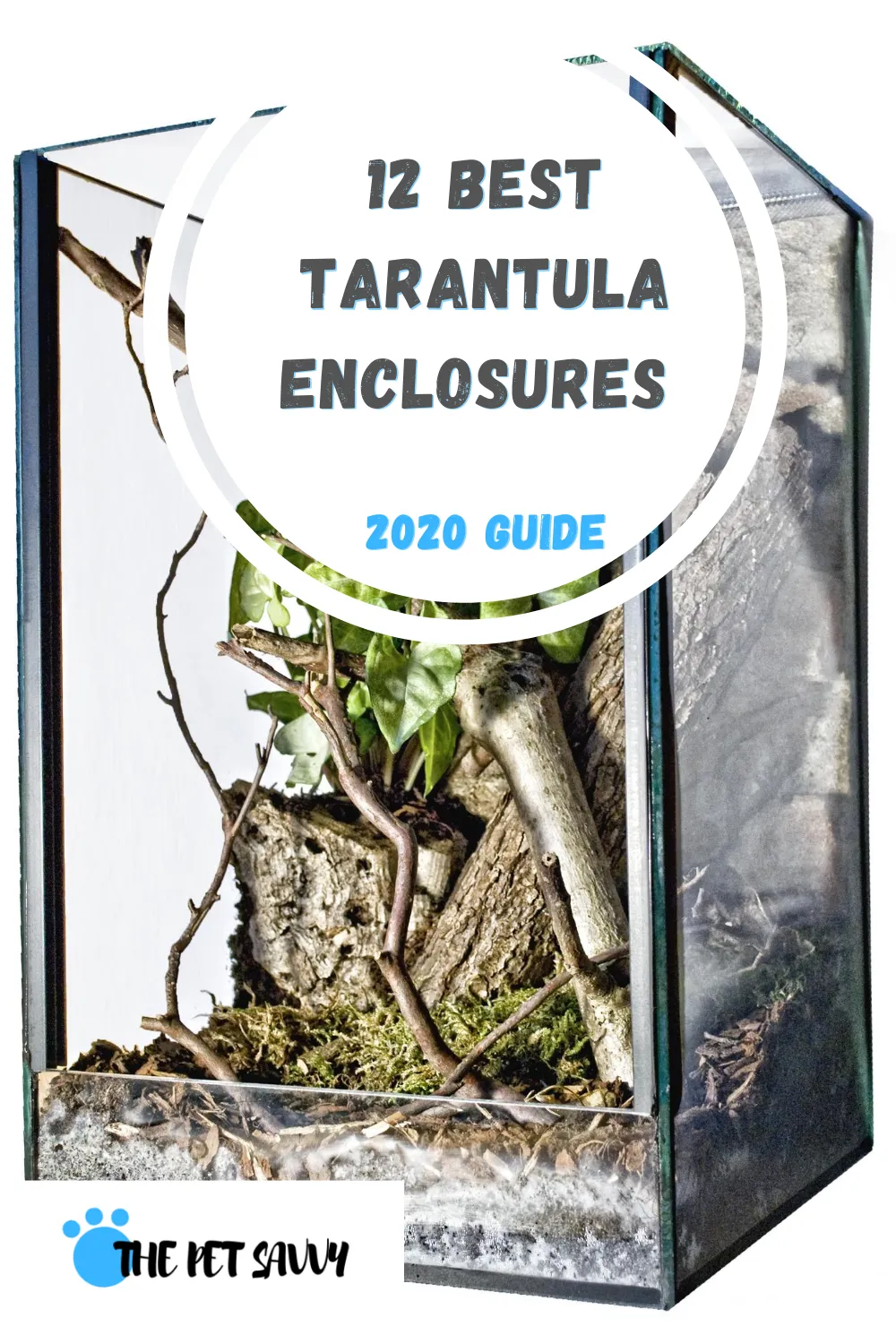Choosing the Best Tarantula Enclosure
Selecting the right enclosure is paramount to the health and well-being of your tarantula. The ideal enclosure provides a safe, secure, and comfortable environment that mimics the tarantula’s natural habitat. Several factors must be considered, including the species of tarantula, its size, and its specific environmental needs. A well-chosen enclosure makes it easier to maintain appropriate humidity and temperature levels, provides adequate ventilation, and allows you to observe your pet without causing undue stress. This guide will walk you through everything you need to know to select the best tarantula enclosure, ensuring your eight-legged friend thrives.
Size Matters Calculating Enclosure Dimensions
Calculating the correct enclosure dimensions is crucial for your tarantula’s health and comfort. A too-small enclosure can restrict movement, leading to stress and health problems, while a too-large enclosure can make it difficult for your tarantula to find food and feel secure. The appropriate size is primarily determined by the tarantula’s leg span, which is the distance between the tips of its front and back legs when fully extended. Understanding the basics of enclosure sizing ensures your tarantula has adequate space to move, molt, and behave naturally.
Understanding Tarantula Size and Needs
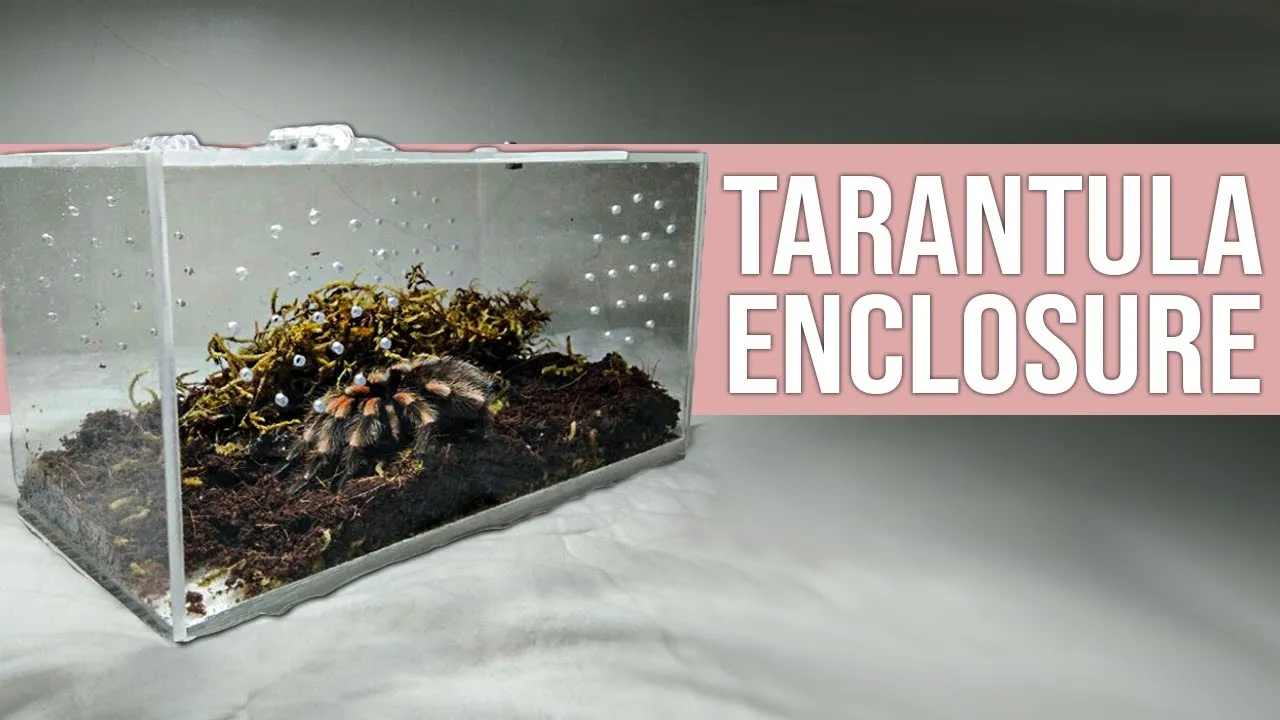
Different tarantula species have varying sizes and activity levels, which directly influence enclosure size requirements. For instance, arboreal tarantulas (those that live in trees) require taller enclosures to accommodate their climbing habits, while terrestrial tarantulas (those that live on the ground) need more floor space. The growth stage of your tarantula is also a factor. Spiderlings require smaller enclosures, while adults need significantly larger setups. Observing your tarantula’s behavior and understanding its species-specific needs will help you choose the right size enclosure.
Minimum Enclosure Size Guidelines
As a general guideline, the enclosure should be at least twice the tarantula’s leg span in width and length for terrestrial species. For arboreal species, the height should be at least twice the leg span. Remember that these are minimums, and providing more space is often better. Overcrowding leads to stress, potential aggression, and difficulty in maintaining optimal environmental conditions. Always consider the species’ specific needs and growth potential when determining the minimum size, and try to exceed the minimum if possible.
Optimal Enclosure Size for Different Species
The optimal enclosure size varies greatly between species. For example, a mature Mexican Red Knee tarantula (Brachypelma hamorii) would thrive in an enclosure that is at least 12x12x8 inches, or even larger, with good ventilation and plenty of space for burrowing and moving. An Avicularia avicularia, a common arboreal species, would need a tall enclosure, perhaps 12x12x18 inches, to allow it to climb and create webs. Research the specific needs of your tarantula species to ensure you’re providing the appropriate living space. Consider the adult size of your tarantula, even when housing a smaller juvenile.
Essential Enclosure Features
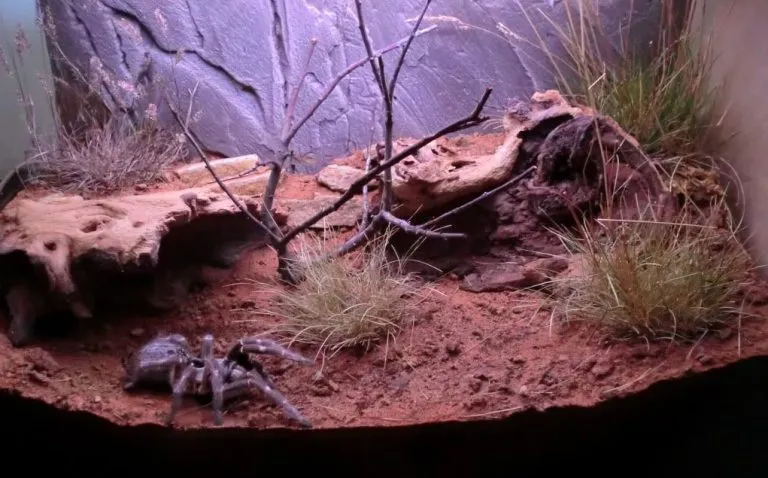
Beyond size, the features of the enclosure are critical for the well-being of your tarantula. Proper ventilation, suitable substrate, and a secure lid are non-negotiable components of a healthy habitat. These elements work together to regulate humidity, maintain air quality, and prevent escapes. Choosing the right materials and features for the enclosure shows your dedication to your tarantula’s safety and comfort.
Ventilation Importance for Tarantulas
Adequate ventilation is essential for preventing the buildup of harmful gases, mold, and bacteria within the enclosure. Poor ventilation can lead to respiratory problems, fungal infections, and overall poor health. Enclosures should have cross-ventilation, which allows air to circulate through the enclosure. This can be achieved with vents on opposite sides of the enclosure. Ensure that the vents are small enough to prevent escapes, and consider the climate you live in. Excessive ventilation in dry climates may require more frequent humidification, while less ventilation may be necessary in humid environments.
Substrate Selection for Tarantula Enclosures
The substrate serves several crucial functions, including providing a surface for the tarantula to walk on, retaining humidity, and offering a place for burrowing. The best substrate choice depends on the tarantula’s species and its natural habitat. For terrestrial species, a mixture of coco fiber, peat moss, and a small amount of vermiculite or sphagnum moss is often ideal. Arboreal species may benefit from a substrate that retains less moisture and provides better drainage. Avoid substrates with sharp edges or chemicals that could harm your tarantula. Make sure the substrate is deep enough to allow burrowing, typically at least twice the spider’s leg span.
Creating a Safe and Secure Environment
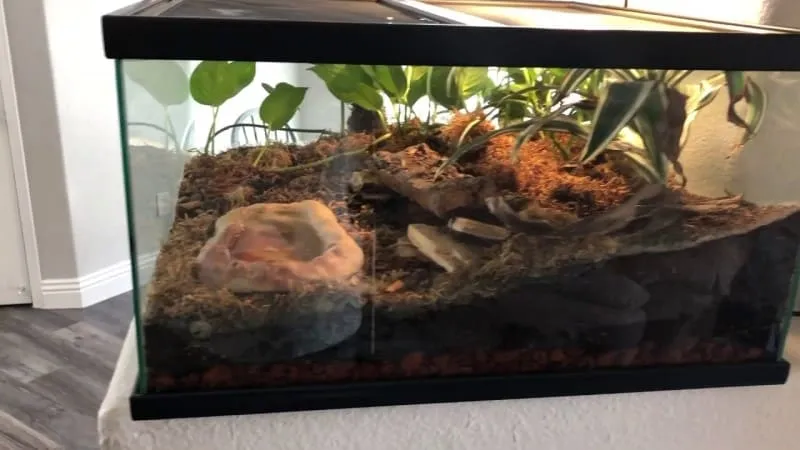
A secure environment is crucial. The enclosure must be escape-proof, with a tight-fitting lid that the tarantula cannot lift or push open. Use clips or other locking mechanisms to ensure the lid stays in place. The enclosure material itself should be durable and resistant to chewing or damage. Regularly inspect the enclosure for any signs of wear or potential escape routes. The safety of your tarantula is paramount, and a secure enclosure gives you peace of mind.
Humidity and Temperature Control
Maintaining the correct humidity and temperature is vital for the tarantula’s health, molting, and overall well-being. Tarantulas are sensitive to changes in their environment, and extreme temperatures or humidity levels can be fatal. Knowing how to monitor and adjust the conditions inside the enclosure is a fundamental aspect of tarantula care.
Humidity and Temperature Control
Most tarantula species thrive in humidity levels ranging from 60% to 80%, with some requiring even higher levels. The temperature range should generally be between 70°F and 80°F (21°C and 27°C). Use a hygrometer to measure humidity and a thermometer to monitor temperature. You can increase humidity by misting the enclosure with water, providing a water dish, and using substrate that retains moisture. To regulate temperature, you may need to use a heat mat or ceramic heat emitter, especially in colder climates. Always place the heat source outside the enclosure to prevent burns.
Furnishing Your Tarantula’s Habitat
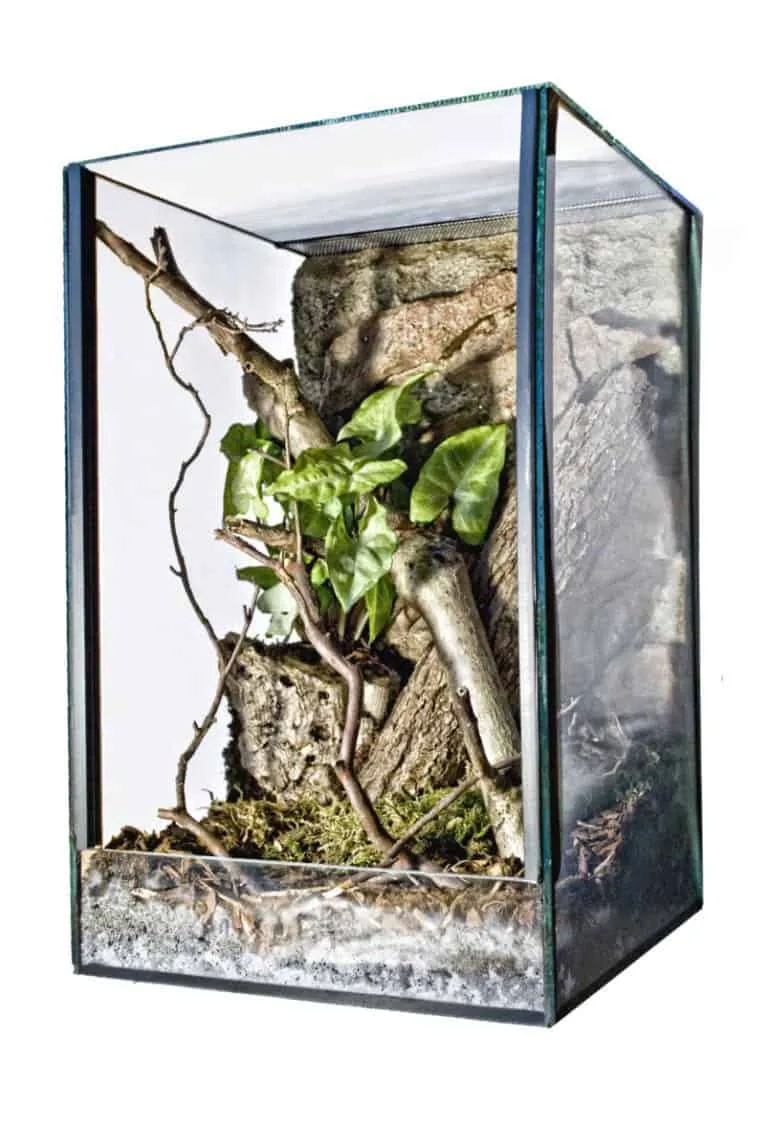
Furnishing the enclosure enriches the environment and provides essential elements for the tarantula. Including items that mimic the tarantula’s natural habitat gives it security, reduces stress, and encourages natural behaviors. From hides to climbing branches, each element plays a role in creating a thriving ecosystem for your pet.
Hiding Places and Enrichment
Provide at least one hide, such as a piece of cork bark, a half-log, or a pre-made hide structure. Tarantulas are crepuscular creatures, meaning they are most active during dawn and dusk, and need a place to retreat to feel secure. Enrichment items, such as artificial plants, branches, and rocks, can add visual interest and give the tarantula options for exploration and activity. Ensure that all decorations are safe and non-toxic, and consider the species’ natural behaviors when choosing enrichment items.
Water and Feeding Dishes
A shallow water dish is essential for providing a constant source of fresh water. Choose a dish that is not too deep, to prevent the tarantula from drowning. Provide appropriately sized feeding dishes for any uneaten prey items, which can help keep the enclosure clean and reduce the risk of mites. Regularly check and clean both water and feeding dishes to maintain hygiene. Water dishes are usually small and are often placed on the ground of the enclosure, while feeding dishes are larger and may sit elevated.
Maintaining Your Tarantula Enclosure
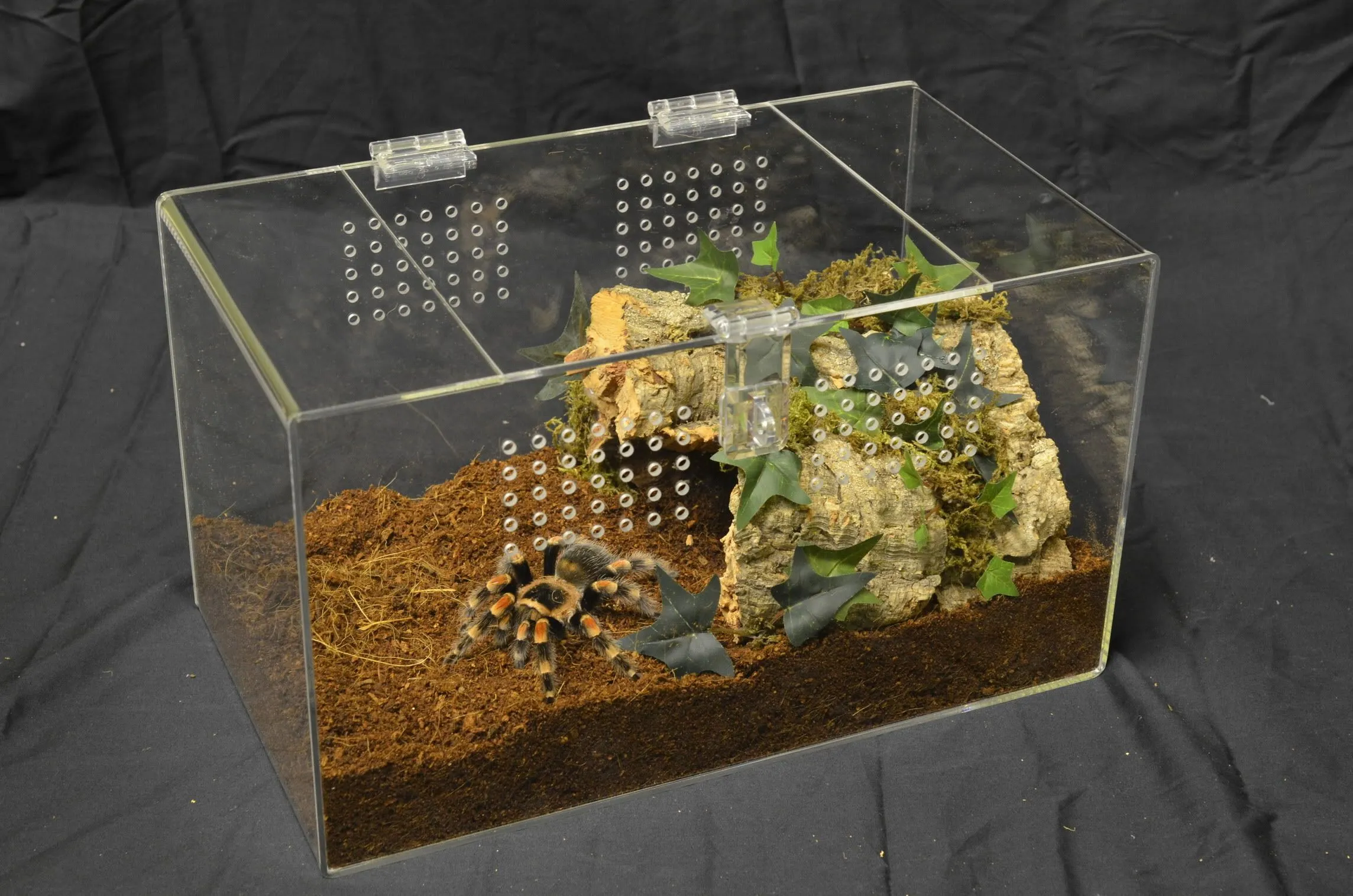
Regular maintenance is key to keeping your tarantula healthy and happy. Consistent cleaning, careful monitoring of environmental conditions, and prompt action when issues arise are all necessary for a thriving tarantula enclosure. A well-maintained enclosure not only keeps your pet healthy but also enhances your enjoyment of your tarantula.
Cleaning and Hygiene Practices
Spot clean the enclosure regularly, removing any uneaten food, feces, or molted exoskeletons. A complete substrate change should be performed every six months or as needed, depending on the species and the enclosure’s conditions. Use a mild, pet-safe disinfectant when cleaning the enclosure. Avoid using harsh chemicals, as they can be harmful to your tarantula. Proper hygiene prevents the buildup of harmful bacteria, mites, and mold, keeping your tarantula’s environment clean and safe.
Monitoring and Troubleshooting Common Issues
Regularly observe your tarantula and its environment. Look for changes in behavior, appetite, and activity levels. Check the humidity and temperature daily, and adjust as needed. Common issues to watch out for include mold growth, mite infestations, and difficulties with molting. If you notice any problems, identify the cause and take appropriate action. Consulting with a veterinarian or an experienced tarantula keeper can provide guidance and support when you need it. Early detection of problems is vital for maintaining a healthy tarantula and enclosure.
By following this guide, you will be well-equipped to choose and maintain the best tarantula enclosure, ensuring your pet’s health, happiness, and longevity. Proper enclosure care is the cornerstone of responsible tarantula ownership.
